
Retail Feels—The IRL Opportunity
Retail is experiencing an identity crisis, as e-commerce continues to influence the way consumers shop. And while brick and mortar retail is still quite healthy, this changing consumer behavior is affecting the way we design and program retail spaces. In our thought leadership series, Retail Perspectives, we will explore this changing landscape, discuss how retailers can (and should) react, and think about how to design for the future of retail.
By: Kristen Plunkett, Harry Rosenbaum, Evan Allen
Illustration by Peter Judson
Retail Feels—The IRL Opportunity
E-commerce gives us the power to browse an infinite aisle anytime, anywhere, and have our purchases materialize IRL (in real life) in a matter of hours. In the world of online retail, where Amazon has set the bar, this instant gratification has become ubiquitous to the point of banality, and streamlined to the point of invisibility. But assuming e-commerce is simply a utilitarian way to seamlessly obtain goods actually overlooks its deeper impact on the retail category as a whole.

Source: AlixPartners Home Delivery Survey, November 2017
Let’s first consider the smartphone-less youth of generations past. For them, the mall was mecca; a gathering place, an entertainment labyrinth, a town square. ‘Going shopping’ was a meandering leisure activity purpose-built for social bonding. Fast forward to today, an era in which the digital world has taken social escapism to new heights. In this new reality, retail therapy has become a common coping mechanism, with more than half of consumers reporting impulsively ‘stress spending’ to deal with feelings of anxiety or depression1. In fact, according to a recent study, 66% of online shopping moments are actually driven by emotional needs2.
Why? Because we can be whoever we want to be online—wealthy, trendy, influential, attractive—our digital identity knows no bounds. We can act without fear of judgment, spending hours filling imaginary shopping carts with shiny things we can’t afford, without the disapproving stares from sales associates or confidence-crushing fitting room lighting. This sense of control quells our real-world anxieties, if only temporarily3. E-commerce has become the safe space for identity-based hedonism.
This overlooked yet seismic shift in the retail landscape necessitates a new value proposition for brick-and-mortar. But when the number of likes on a meticulously-edited selfie is enough to fill our social quota, why would we need to invest effort in engaging with brands in the real world?
“when the number of likes on a meticulously-edited selfie is enough to fill our social quota, why would we need to invest effort in engaging with brands in the real world?“
At its most fundamental level, the digital channel confines brands to the medium of the screen. While that limits the experience to audiovisual characteristics, physical retail can bring a brand to life in a more visceral and multisensory way using sound, sight, smell, touch, and even taste. What’s more, time spent in the physical space can be connected to action by the customer, offering the potential to imbue the brand with greater personal value.
So how can a company create a physical experience that fulfills new imperatives and capitalizes on new potential within brick and mortar? Companies must focus on using brick-and-mortar as a vessel for what we’re calling productive phenomena—ephemeral, multi-sensory experiences that offer customers a meaningful interaction that can’t be delivered through a digital medium. Achieving these productive phenomena will require several strategic shifts in how we think about our retail spaces.
From commerce to connection
The entire real estate chain of command, from retailers to landlords to investors, needs to rethink how they value space. When a customer comes into a store and doesn’t buy anything, is that really a loss? In a landscape where our primary metric becomes ‘influence per square foot’ rather than ‘sales per square foot’ (or ‘health ratio’), any positive in-store engagement should be considered a win. The primary concern is more about how many relationships your store can form, and how strong those relationships are.
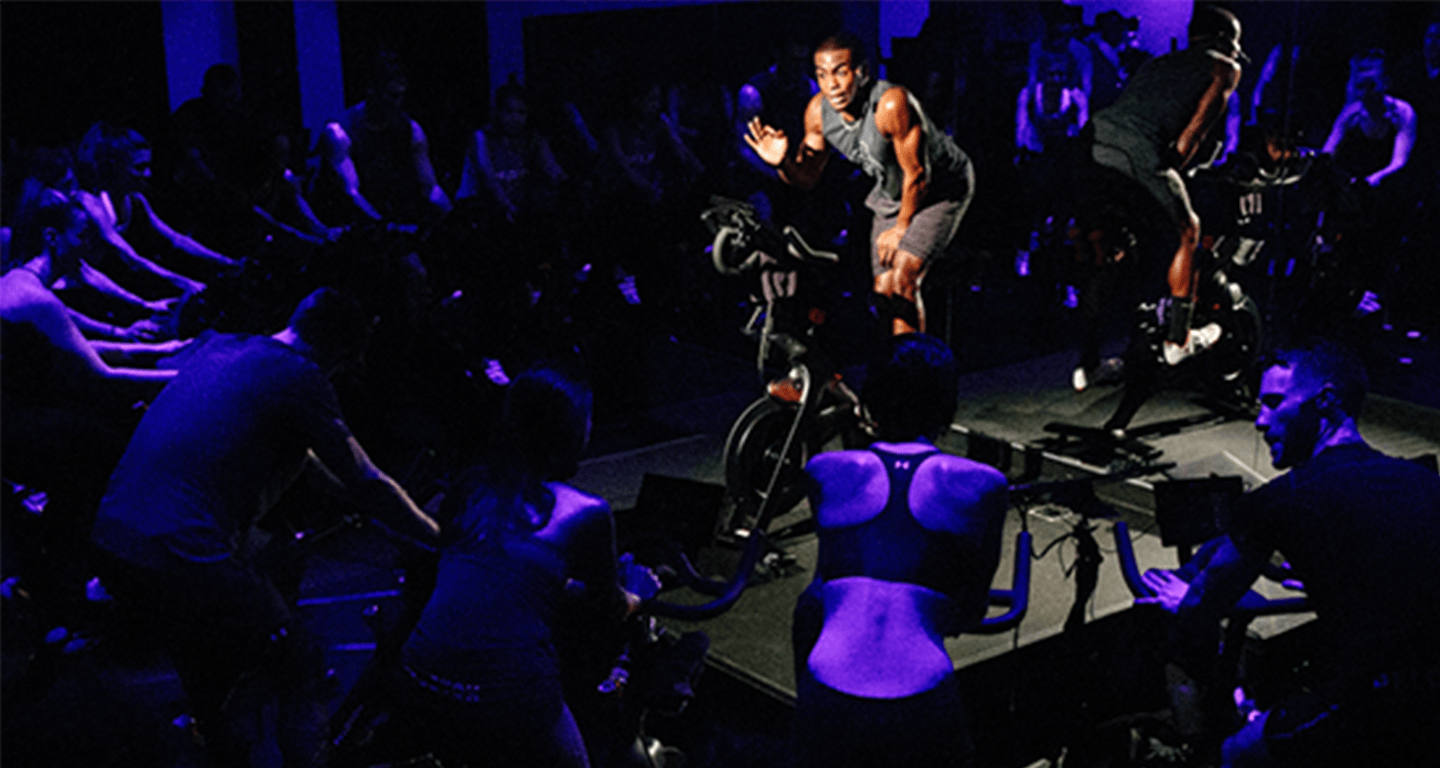
Source: Peloton
Peloton has successfully scaled the boutique fitness experience through high production value digital content, extending the brand’s reach to over 500k bike owners who have formed a tight community, even though the majority ride remotely. In doing so, Peloton has bred a ‘cult’ of devotees who use the platform to bridge the geographical gap between their independent IRL brand experiences.
- What if the value of the store was measured in time or impressions, rather than sales per square foot?
- What if the store was a tool to initiate and facilitate lasting relationships?
- How could the store form connections with people beyond those who enter it?
From singular to system
The current paradigm for retail store design takes a singular idea and replicates it across multiple locations. But what if the brand experience was connected, yet different at every touchpoint? Rather than thinking about each store as an island, we should consider them part of a holistic ecosystem, with each experience slightly different and customized to the locale. In this way we can design our retail experiences around the activities and lifestyles our customers engage in and aspire to.
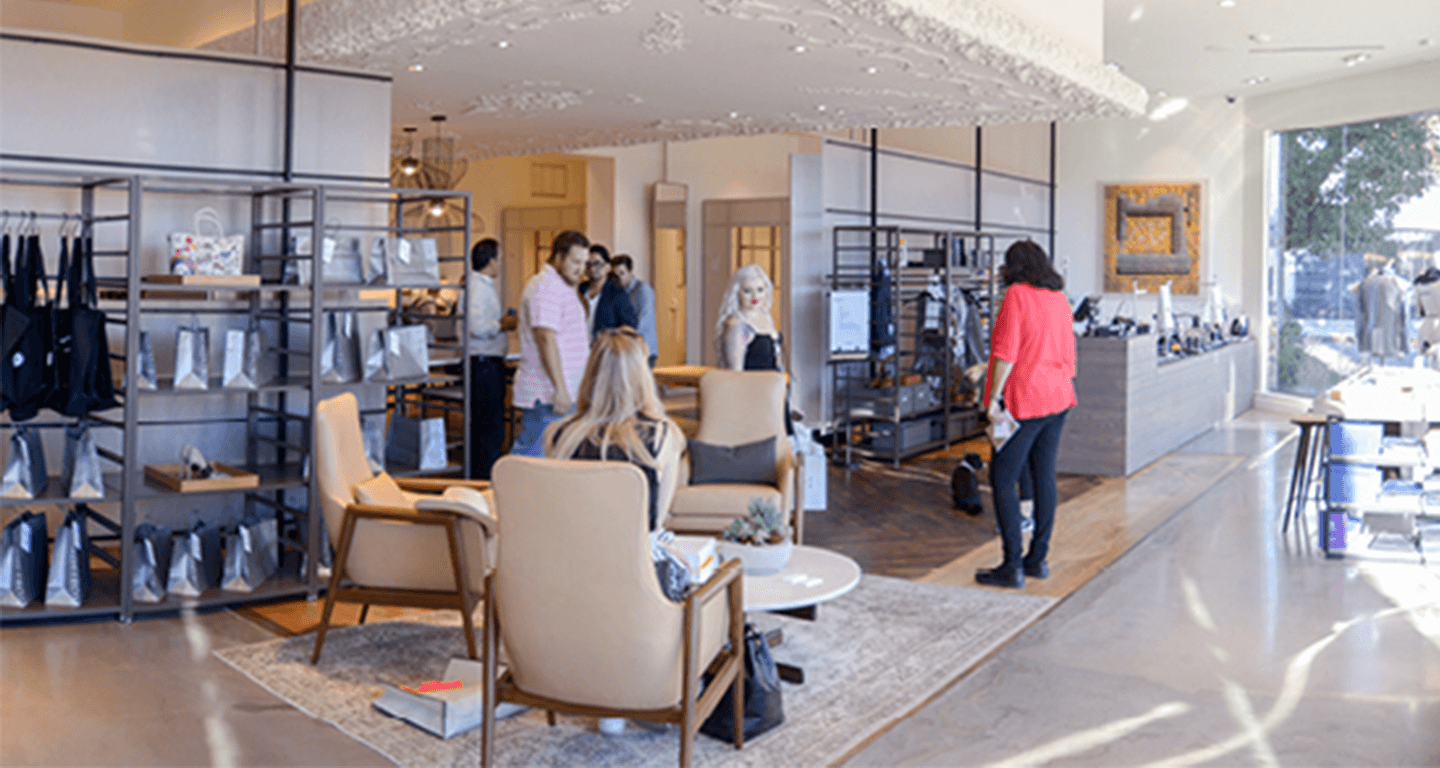
Source: Nordstrom
Nordstrom is expanding its successful small-footprint, local service hub network, Nordstrom Local. These hubs don’t carry any traditional inventory; instead, they employ tailors, cobblers, manicurists and stylists, in addition to serving alcohol and fresh juices, to bring the convenience of these services closer to the consumer. The offerings and design of each store are customized to the needs of its specific location and audience. Working in tandem with the broader store network, these smaller outposts provide services tangential to the core Nordstrom product, and also serve as a pickup location for online purchases.
- What if every moment around the store visit–from planning to the next destination–was interconnected?
- What strategies can retailers use to gather meaningful local data?
- What if the experience in-store unlocked new experiences with the brand in other channels?
From mass to malleable
While a physical product is constraining, a physical experience can be customized in real time. As technology and access to data improve, so does our ability to know our customer and respond to their needs and desires within the channels they select. As the place where that personalized brand moment occurs, the experience not only adds value to each interaction, but also to the product itself.
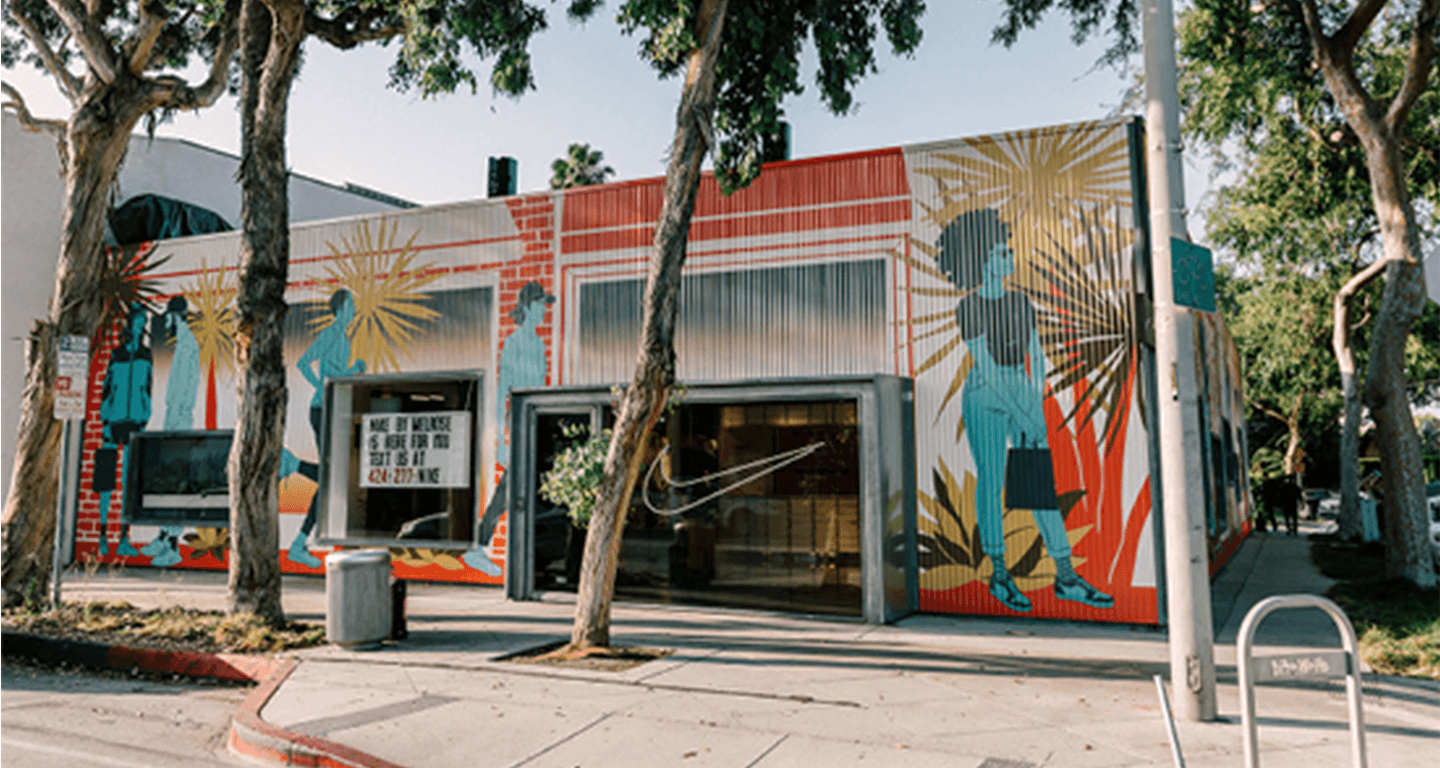
Source: Nike
The stock at the pop-up-style Nike Live Melrose shop, as well as its location, were selected using local customers’ online shopping and Nike Plus apps data. The curated Local Favorites section of the store is stocked with products uniquely tailored to the local LA ‘micro-market’, rather than global trends.
- How might a store use data to deliver a unique experience to each person who walks through its doors?
- What if the store focused just as much on emotional value as tangible value?
- What if shoppers had to play an active role in a product’s creation before taking it home?
From polish to process
Giving consumers a glimpse into a brand’s creative or production process has proven to be a successful storytelling method. Shoppers no longer want to interact only with an impeccably-merchandised display, they want to understand the maker, the provenance of that product, and how it came to be. Transparency is valued over perfection, and unique or bespoke elements cue authenticity and quality.
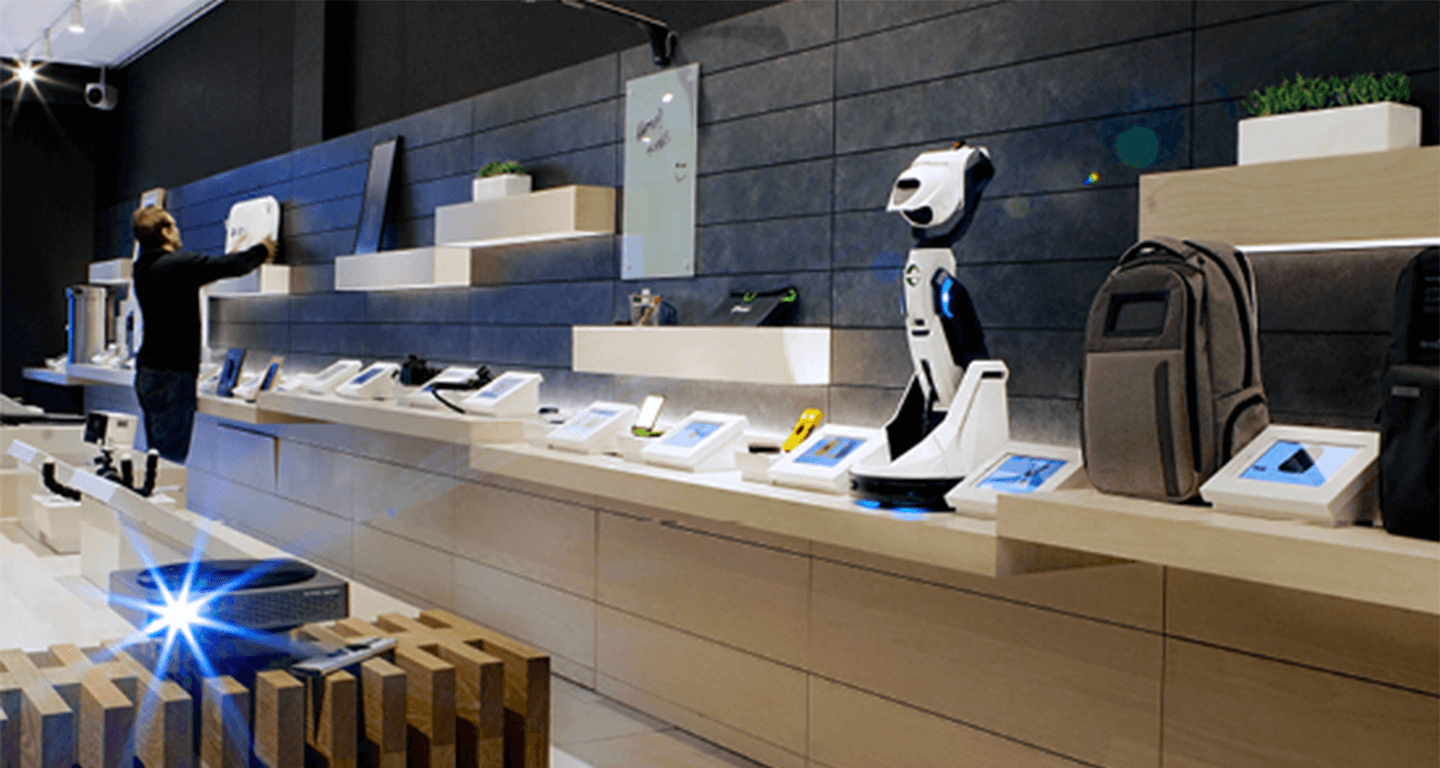
Source: B8ta
B8ta began as a retail concept enabling new IoT brands to test products and interact with consumers, and it now partners with retailers like Macy’s on pop-up concepts showcasing emerging makers. The company allows brands to tweak display, marketing, customer service, and even product, based on ‘interior analytics’ data. B8ta’s ‘store-as-a-service’ subscription platform enables brands that traditionally haven’t operated stores to quickly set up a physical retail presence.
- What if the finishing touches on a product were completed in-store?
- What if product design, manufacturing, and retailing happened in the same space?
- How could the store appropriately act as a makerspace for collaborators or independent creators?
From consistency to chance
A long-accepted tenet of strong branding—consistency—now offers less value when applied to the store environment, where foot traffic now flocks to unexpected or ephemeral experiences that refresh and change. As opposed to online, where we are always the orchestrators of our own shopping journey, relinquishing control to a changing physical space can actually be exhilarating.
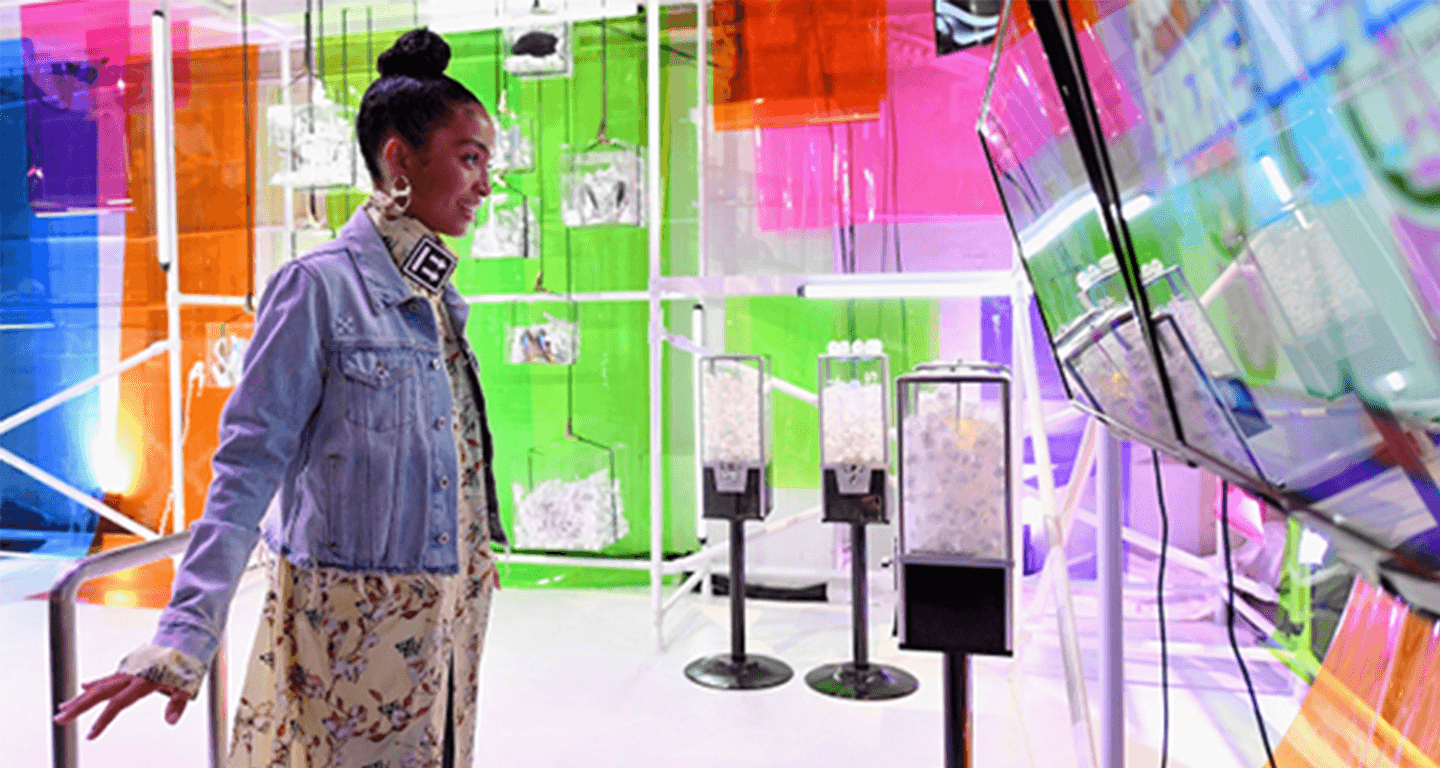
Source: Refinery29
Deemed a ‘creative playhouse for the Instagram set’ by the New York Times, 29Rooms is an annual pop-up experience where visitors can ‘choose their own adventure’ through a labyrinth of immersive installations inside an 80k square foot warehouse. This largely unbranded IRL experience is put on by Refinery29, a digitally-native media brand.
- What if the store’s interior was treated more like a public space, with the potential for anything to happen?
- How can unpredictability be intentionally designed into the store?
- What if the store was responsive to dynamic aspects of its environment?
From stock to scarcity
In the past, an item being out of stock meant a lost sale and a negative brand experience. Today, scarcity is sexy. New omnichannel models including buy-online-pickup-in-store, ‘showrooming’ product, and limited release products give consumers more optionality when it comes to accessing stock, ordering, and fulfillment, and more incentive to buy on the spot when access is limited.
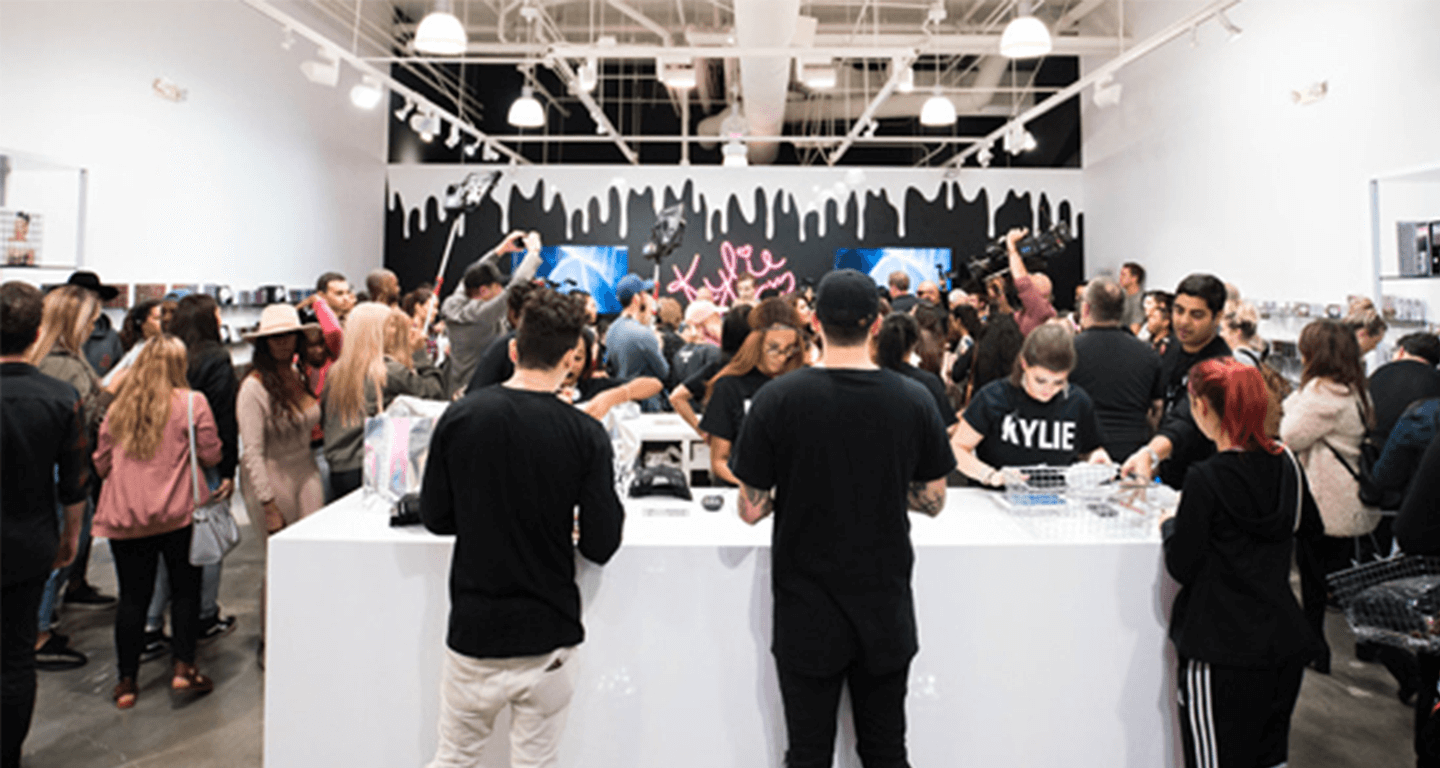
Source: Shopify
Kylie Cosmetics launched in 2016 with a $29 “lip kit”, and has sold more than $630m worth of makeup since. Kylie has partnered with Topshop to open brick-and-mortar pop-ups in malls across the US. Short-lived and timed to new product drops, fans line up for blocks and have reportedly even slept outside to gain access.
- How can brands tap into cultural or temporal moments to build hype?
- What if a brand’s presence IRL was completely impermanent and intentionally difficult to find?
- How can major retailers create a feeling of scarcity at scale?
Despite the constraints we’ve placed around shopping—including the four walls of a store—it remains an emotion-laden escape from reality masquerading as a pragmatic activity. Now that we understand this, we can use it to our advantage by redefining how we engage with consumers through real-world touchpoints.
Spaces aren’t special or memorable because they house things, they’re memorable when they rouse emotions and instill memories. Something has to happen there. In our opinion, that something should be a productive phenomena—an experience that can only exist IRL, leveraging the uniquely multisensory, multiplayer nature of the environment around us.
2. Aol “Unconditional Shopping How Seven Moments are Shaping the way Consumers Shop Online”, 2016

Evan is an Associate Creative Director. In his role at Fahrenheit 212, Evan is responsible for design innovation with a focus on retail spaces, environments, and branded user experiences. He is particularly interested in creating holistic experiences that consider our built environment in conjunction with the technology that augments our experience within a space.
We respect your privacy
We use Cookies to improve your experience on our website. They help us to improve site performance, present you relevant advertising and enable you to share content in social media. You may accept all Cookies, or choose to manage them individually. You can change your settings at any time by clicking Cookie Settings available in the footer of every page. For more information related to the Cookies, please visit our Cookie Policy.